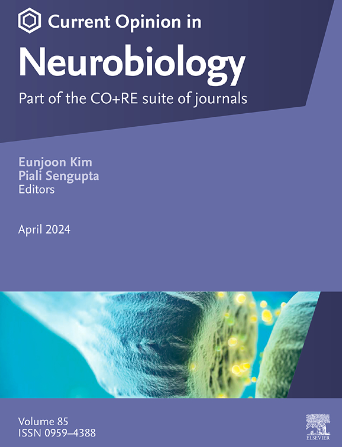蚊子行为和感觉系统中的两性异形现象
IF 5.2
2区 医学
Q1 NEUROSCIENCES
引用次数: 0
摘要
在动物王国里,两性二态性常常造成雄性和雌性之间的显著差异。这种差异非常明显,以至于同一物种的个体甚至可能看起来没有血缘关系。这种二态性也扩展到行为。雄性通常会进行复杂的求爱仪式来吸引雌性,而雌性通常会在后代的照顾上投资。在昆虫中,两性在形态和行为上的二态性也很容易观察到。在这里,我们讨论蚊子的两性二态性,其雄性和雌性表现出明显的解剖,生理和行为差异。我们关注两种行为:雌性特有的吸血行为和雄性特有的求偶和交配行为。这些行为依赖于不同的感觉方式,导致它们的感觉器官、神经回路和分子遗传学中的性别二态性。我们在蚊子的嗅觉、味觉和听觉的背景下探索这些差异。本文章由计算机程序翻译,如有差异,请以英文原文为准。
Sexual dimorphism in the behaviour and sensory systems of mosquitoes
In the animal kingdom, sexual dimorphism often creates marked differences between males and females. These can be so pronounced that individuals of the same species may even appear unrelated. Such dimorphism also extends to behaviours. Males often perform elaborate courtship rituals to attract females, while females usually invest in offspring care. Among insects too, sexual dimorphism in form and behaviour is readily observed. Here, we discuss sexual dimorphism in mosquitoes, whose males and females exhibit distinct anatomical, physiological, and behavioural differences. We focus on two behaviours: female-specific blood-feeding and male-specific courtship and mating. These behaviours rely on distinct sensory modalities resulting in sexual dimorphism within their sensory organs, neural circuits, and molecular genetics. We explore these differences in the context of olfaction, gustation, and audition in mosquitoes.
求助全文
通过发布文献求助,成功后即可免费获取论文全文。
去求助
来源期刊

Current Opinion in Neurobiology
医学-神经科学
CiteScore
11.10
自引率
1.80%
发文量
130
审稿时长
4-8 weeks
期刊介绍:
Current Opinion in Neurobiology publishes short annotated reviews by leading experts on recent developments in the field of neurobiology. These experts write short reviews describing recent discoveries in this field (in the past 2-5 years), as well as highlighting select individual papers of particular significance.
The journal is thus an important resource allowing researchers and educators to quickly gain an overview and rich understanding of complex and current issues in the field of Neurobiology. The journal takes a unique and valuable approach in focusing each special issue around a topic of scientific and/or societal interest, and then bringing together leading international experts studying that topic, embracing diverse methodologies and perspectives.
Journal Content: The journal consists of 6 issues per year, covering 8 recurring topics every other year in the following categories:
-Neurobiology of Disease-
Neurobiology of Behavior-
Cellular Neuroscience-
Systems Neuroscience-
Developmental Neuroscience-
Neurobiology of Learning and Plasticity-
Molecular Neuroscience-
Computational Neuroscience
 求助内容:
求助内容: 应助结果提醒方式:
应助结果提醒方式:


